TOP LUCKY PLANTS FOR HOME AND OFFICES
LETS HAVE A LOOK TO LUCKY PLANTS
From the beginning of civilized societies plants have a huge significance, not only they produce oxygen, remove harmful substances from the air, interestingly some plants are known as luck boosters, keeping them indoors or outdoors helps to bring prosperity in life.
Ancient civilizations were able to understand the ecologic balance better, in context to ancient Indian tradition plants and tree are deeply integrated with religion as its proclaimed “by planting any type of tree, useful for fruits and flowers, a person gets a reward of thousand cows adorned with jewels, while cutting a green tree is an unforgiving offense.”
If we refer Islamic litt., its encouraged to plant trees and warned about cutting them down for instance – ‘Whoever plants a tree and patiently maintains it and tends to it until its fruition, every single fruit consumed from that tree is regarded by Allah as charity,’ (Kanz al-Ummal, no. 9081). Apart from several of trees, at least nineteen medicinal plants have been identified in the Holy Quran including Camphor, Date palm, Fig, Ginger, Grape, Garlic, Lentil, Olive, Onion, Pomegranate, Summer squash, Sweet basil, Athel tamarisk, Tooth-Brush Tree, Arak, Mustard, Acacia, Cucumber, leek, and Cedrus.
Holy Bible says “God made the trees with seed-bearing fruit, he gave us the possibility to increase their number by planting the seeds, we needed to learn to do this to continue receiving their benefits.” (Genesis 1:29-30), there are a number of trees and herbs mentioned in the Bible as precious gift of god to grow and spread like, plam trees, juniper, cypress, acacia, spirale, lavender, rosemery, garlic, dill, almond, aloe etc.
Feng Shui emphasizes on plating the plants which are useful for environment, Feng Shui makes it clear “Any plant believed to purify the air is an excellent choice to be kept near or in the houses, choose flowering plants with round or smooth-edged leaves or canopy and leaves that are clustered, higher number of leaves is more better. Arrange the plants in pairs to keep the balance of yin and yang. Along with having plants its equally important to take the responsibility of their care, keep them healthy and clean so that those can invite positive flow of chi.”
Lets have a look at the plants which are considered luck bringer and can be planted in small containers:
1. Crassula Ovata (Money Plant)
Crassula is most favorite Feng Shui plant known to attract money and good luck as it grows, plant is described to harmonize human existence with the surrounding environment, it produces positive energy with its well-rooted and vibrant new growth. As per Feng Shui, plants with round or smooth-edged leaves or canopy and leaves that are clustered with higher number of leaves are considered the best. Below are its growing habits:
Location – Indoor
Light – Semi Shade, Bright Light
Watering – Weekly, bi-weekly, less frequent
Temperature – Loves range 15 to 30 degree celsius
Botanical name – Crassula Ovata, – Get the plant now

2. Pachira Aquatica (Money Tree)
Pachira is popular Feng Shui luck bringer plant known to attract money, there is a famous tale of a poor farmer from Taiwan who prayed for money and found this plant on his way to home, he took it as an omen and made money by selling plants grown from its seeds, soon after he became very rich. Below are its growing habits:
Location – Indoor
Light – Semi Shade, Bright Light
Watering – Weekly, less frequent
Temperature – Loves range 15 to 30 degree celsius
Botanical name – Pachira Aquatica, – Get the plant now
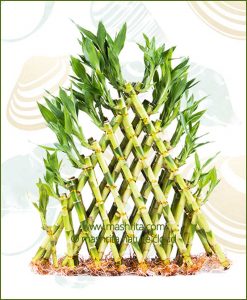
3. Dracaena Braunii (Lucky Bamboo)
Lucky Bamboo is a symbol of good fortune in the Asian culture from more than 5000 years. In Chinese, Lucky Bamboo is known as Fu Gwey Zhu which has three symbols signifying Fu -Luck and Fortune, Gwey -Power and Honor, Zhu -Bamboo. Lucky Bamboo is believed to bring harmony among the five Feng Shui elements water, fire, earth, wood and metal for a more positive life experience. Below are its growing habits:
Location – Indoor
Light – Semi Shade, Bright Light
Watering – Weekly, less frequent
Temperature – Loves range 15 to 30 degree celsius
Botanical name – Dracaena Braunii, – Get the plant now

4. Spathiphyllum (Peace Lily)
Spathiphyllum is considered as a fortune plant in Feng Shui, it is super plant in terms of detoxifying air, as it cleans all types of environmental contaminants including benzene and formaldehyde. Plant works best in shade and needs little brightness to thrive, it needs watering once a week. Below are its growing habits:
Location – Indoor
Light – Shade, Artificial Light
Watering – Weekly, less frequent
Temperature – Loves range 15 to 30 degree celsius
Botanical name – Spathiphyllum, – Get the plant now
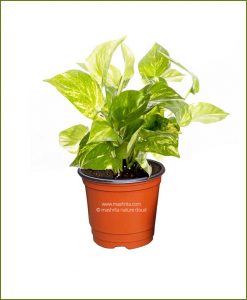
5. Epipremnum Aureum (Golden Pathos)
Money plant is very popularly in India, plant has shiny heart-shaped leaves in different shades of green with several beliefs associated with them. Money plant is believed to bring good luck, happiness and prosperity. As per Feng Shui, it is known to bring wealth. Below are its growing habits:
Location – Indoor
Light – Shade, Artificial Light
Watering – Weekly, less frequent
Temperature – Loves range 15 to 30 degree celsius
Botanical name – Epipremnum Aureum, – Get the plant now
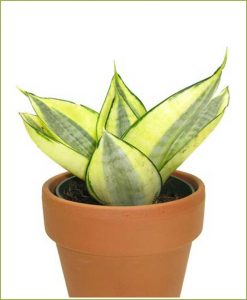
6. Sansevieria (Snake Plant)
Sansevieria is very popular houseplant, it has several local names such as snake plant, mother-in-law’s tongue, viper’s bowstring hemp etc. As per Feng Shui, plant is considered to bring good luck. Snake plant was part of NASA Clean Air Study and found effective in improving indoor air quality by removing benzene, formaldehyde, trichloroethylene, xylene and toluene. Below are its growing habits:
Location – Indoor
Light – Shade, Artificial Light
Watering – Weekly, less frequent
Temperature – Loves range 15 to 30 degree celsius
Botanical name – Sansevieria, – Get the plant now

7. Aloe Barbadensis Mill (Aloe Herb)
Aloe is luck bringer, ornamental and medicinal plant known by several common names including Chinese Aloe, Indian Aloe, True Aloe, Barbados Aloe, Burn Aloe, First Aid Plant etc. Aloe is associated to Ayurveda and Indian culture from pre historic period, it has several regional names like Ghritkumari in Hindi, Kalabanda in Telugu, Katralai in Tamil, Kumari in Malayalam, Lolisara in Kannada and Koraphada in Marathi etc. Below are its growing habits:
Location – Indoor
Light – Full Sun, Partial Sun
Watering – Weekly, less frequent
Temperature – Loves range 15 to 45 degree celsius
Botanical name – Aloe Barbadensis Mill, – Get the plant now
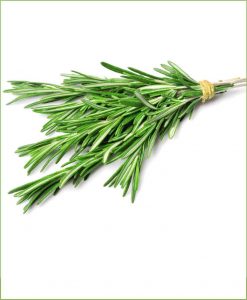
8. Rosmarinus Officinalis (Rosemary Herb)
Rosemary is very popular herb plant, according to myth the Virgin Mary is said to have spread her blue cloak over a white-blossomed rosemary bush when she was resting, and its flowers turned blue. The shrub then became to known as the Rose of Mary. Rosemary is considered lucky and sacred to ancient Egyptians, Romans and Greeks. Below are its growing habits:
Location – Outdoor
Light – Full Sun, Partial Sun
Watering – Weekly, less frequent
Temperature – Loves range 15 to 45 degree celsius
Botanical name – Rosmarinus officinalis, – Get the plant now
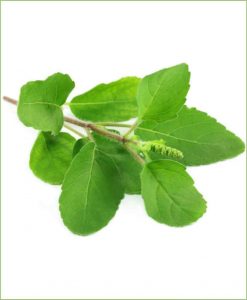
9. Ocimum Sanctum (Tulsi Herb)
Tulsi is the one of the most revered plants, it is known as Holy Basil in English and Tulasi in Sanskrit, some other names used for the Tulsi are Manjari, Lakshmi Tulsi, Krishna Tulsi, Ram Tulsi, Kapoor Tulsi, Trittavu, Tulshi and Thulsi etc. Apart from tremendous mythological and religious significance it purifies air, kills bacteria’s, negates negative energies, creates positivity and helps awaken passion in anyone who eats it. Below are its growing habits:
Location – Outdoor
Light – Full Sun, Partial Sun
Watering – Daily, frequent
Temperature – Loves range 15 to 45 degree celsius
Botanical name – Rosmarinus officinalis, – Get the plant now
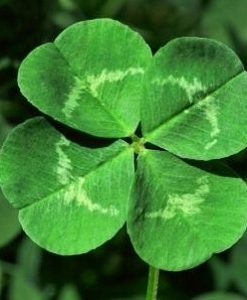
10. Trifolium Repens (Four Leaf Clover)
Four-leaf clover is a rare variation of the common three-leaf clover. According to tradition, such clovers bring good luck and four leaves of clover represent hope, faith, love and luck. It is one of the most auspicious good luck symbols all over the world. In Irish tradition three leaf clover represents the holy trinity – one leaf for the father, one for the son and one for the holy spirit, when it is found with the fourth leaf, represents God’s grace. Its rare to find.
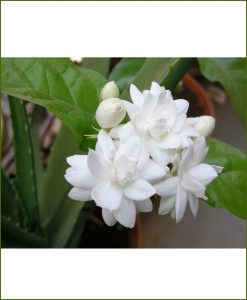
11. Jasminum (Jasmine Flower)
Native to Asia, Jasmine is categorized under the plants family Oleaceae with scientific name Jasminum, its name comes from the Persian word ‘yasmin’ meaning gift from God. Jasmine is one of the the most popular flowers in India where it is commonly used for worship Lord Shiva and other deities. Jasmine flowers are symbolic, they symbolize different emotions of life in different cultures, some of these include love, romance, modesty, sensuality, amiability. In Hindu weddings, Jasmine flowers are often used as the bridal flower to symbolize a promise as a deep and everlasting love between the married couple. Below are its growing habits:
Location – Outdoor
Light – Full Sun
Watering – Daily, frequent
Temperature – Loves range 15 to 45 degree celsius
Botanical name – Jasminum, – Get the plant now
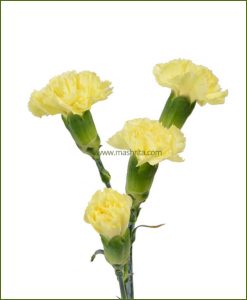
12. Dianthus Caryophyllus (Carnation Flower)
Native to Mediteranian, dianthus is categorized under the plants family Caryophyllaceae with scientific name Dianthus Caryophyllus, it translates to “flower of love”. Carnation flowers are found in a wide range of colors, in general they express love, fascination and distinction, while every color carries a unique and rich association with strong human feelings. White carnations expresses pure love and good luck, red symbolizes admiration, dark red represents deep love and affection while purple imply capriciousness, and pink caries the greatest significance. Below are its growing habits:
Location – Outdoor
Light – Full Sun
Watering – Daily, frequent
Temperature – Loves range 15 to 45 degree celsius
Botanical name – Dianthus Caryophyllus, – Get the plant now

13. Rosa (Rose Flower)
Native to Asia, rose is categorized under the plants family Rosaceae with scientific name Rosa, it is common and popular flowering plant in India. Rose is believed to attract love, healing and luck, these have several symbolic importance associated with different color flowers. Rose flowers are extremely fragrant by own unless that the species developed for large and multi shade blooms for commercial cultivation. Below are its growing habits:
Location – Outdoor
Light – Full Sun
Watering – Daily, frequent
Temperature – Loves range 15 to 45 degree celsius
Botanical name – Rosa, – Get the plant now

14. Passiflora Incarnata, (Passion flower or Krishna Kamal)
Native to Asia, passiflora is categorized under the plants family Passifloraceae with scientific name Passiflora Incarnata, it is mysterious flowering plant known as clock flower and several other names. Below are its growing habits:
Location – Outdoor
Light – Full Sun
Watering – Daily, frequent
Temperature – Loves range 15 to 45 degree celsius
Botanical name – Passiflora Incarnata, – Get the plant now

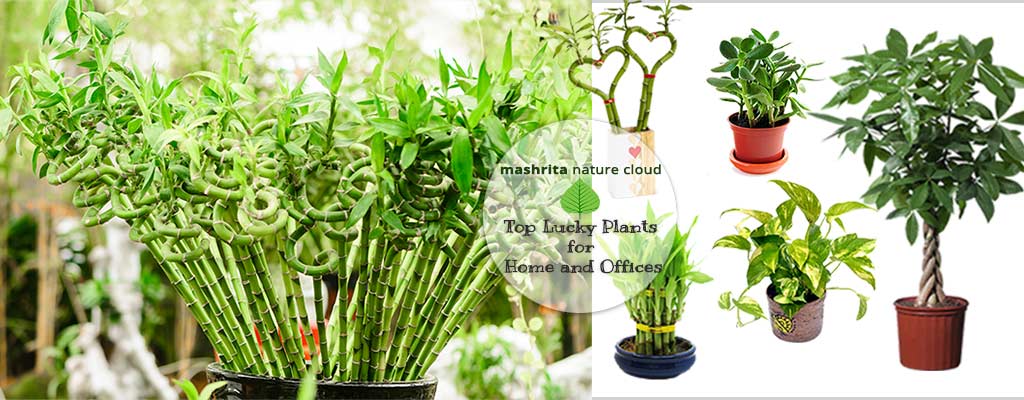
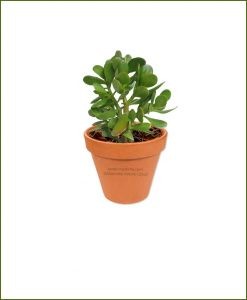
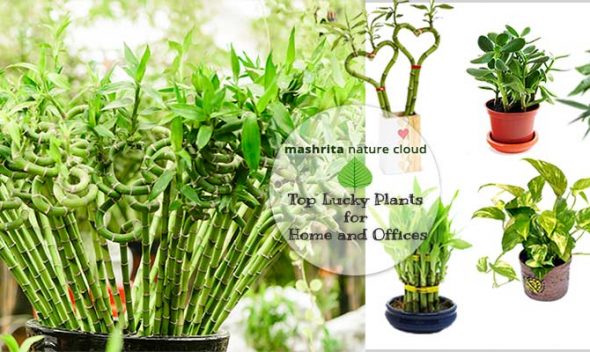
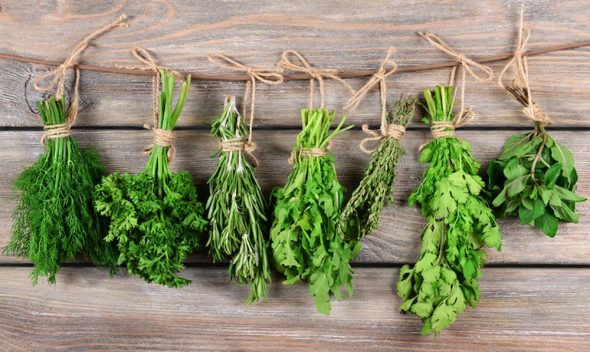
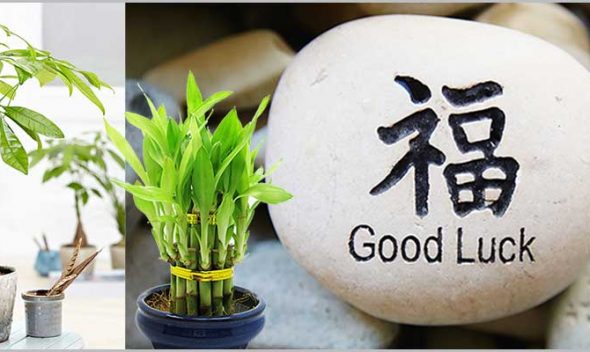







Excellent list of lucky plants, well summarized and covers the most of plants from all over the world. Information is more authentic.